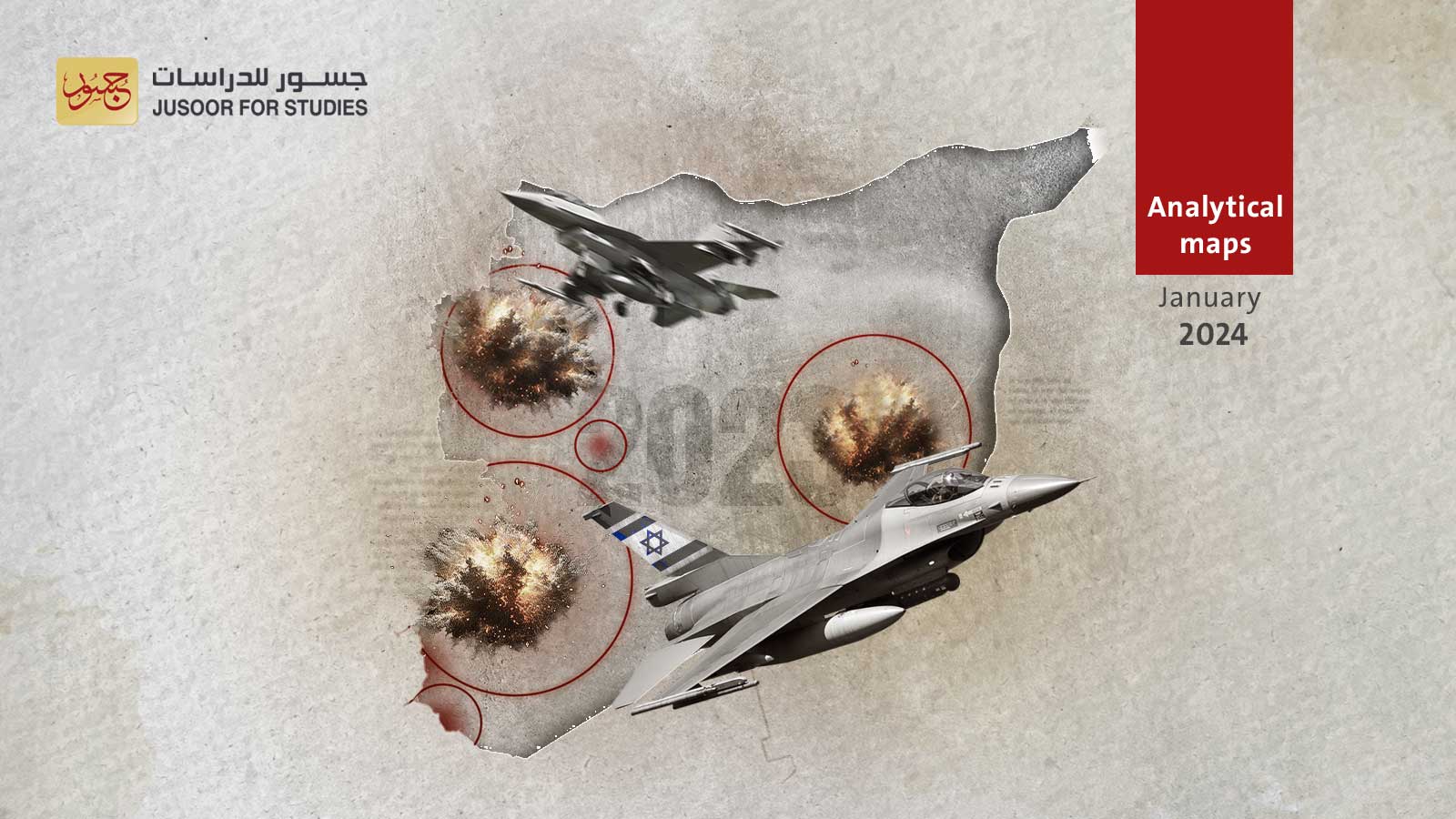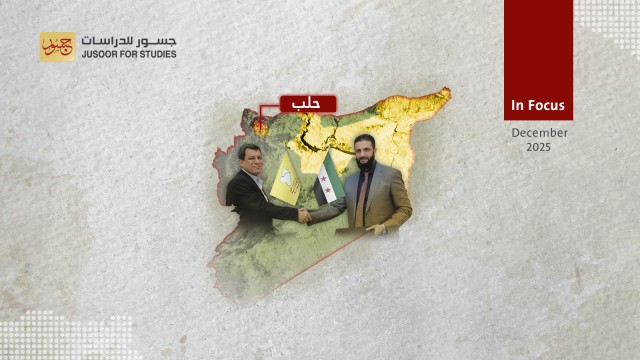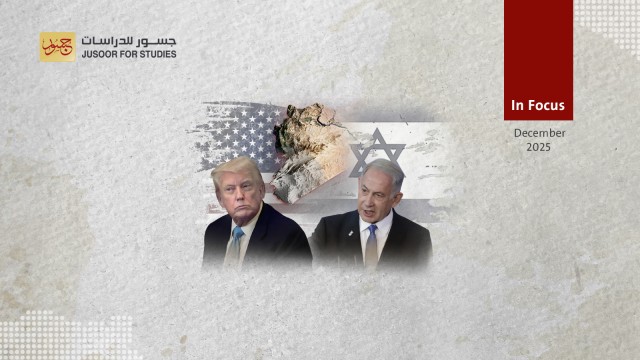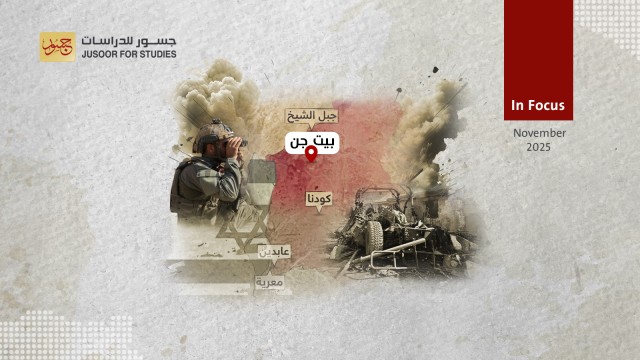Israeli Strikes in Syria in 2023
Introduction
Israel escalated its military activities in Syria in 2023, carrying out at least 40 strikes, up from 28 a year the previous two years. The strikes were launched from air, ground and sea, and some affected more than one governorate at the same time. They reached a total of 95 sites, destroying approximately 297 targets.
Last year’s escalation is linked to Iran’s expansion of its own activities, aimed at turning Syria into a forward base for its operations, via its proxies, against Israel. The latter has treated these efforts as a major security threat since 2013, but is still struggling to draw the line between necessary prevention and unwanted escalation.
Israel stepped up its operations in Syria after the catastrophic earthquake of February, and again following the outbreak of the Gaza War, carrying out 11 strikes compared to six during the same time periods of both 2022 and 2023. This came as Iran also exploited those two events to increase its presence in Syria, raising the number of military bases and outposts it runs there to 570, most of them in the south of the country. It has also expanded operations to supply its militias with weapons via air routes as well as by land.
Iran claims to have provided Syrian regime forces with the Khordad 15 air defense system. It has also conducted joint military exercises with regime forces, coinciding with visits by senior Iranian officials, including Air Force and Air Defense Command Salah al-Din Kasir al-Ghanim and Minister of Defense and Commander of the Revolutionary Guard, Ismail Qaani. The spokesman of the Supreme National Security Council, Kyotun Khosravi, has also officially acknowledged the existence of Iranian military bases in the country, saying they were established at the request of the Syrian regime .
First: Israel’s Military Activities in Syria in 2023
Israel carried out a variety of military operations in Syria in 2023. It continued to carry out frequent air strikes and launched multiple ground incursions into Syrian territory, as well as thwarting numerous drone attacks by Iranian militias.
Air strikes remained the Israeli military’s tool of choice in Syria, primarily with F-16 fighter jets and drones. Air superiority allowed Israel to inflict material and human losses on Iranian militias without risking putting boots on the ground in Syria.
Israel’s heavy reliance on the F-16 may be linked to Iran’s announcement that it has provided Syrian regime forces with the Khordad 15 air defense system. Israel appears to have taken these claims seriously, and has intensified its aerial monitoring of Iranian militias’ activities. The F-16, which is equipped with an electronic defense system, gives Israel advanced capabilities to identify field targets in all weathers, to fly at low altitudes and thus avoid ground radar, and to attack ground targets using air-to-surface missiles or bombs, as well as partially or totally destroying targets.
On the other hand, despite the plane’s combat capacities, Israel’s use of the veteran F-16 rather than the newer, stealthier F-35, indicates that the risks pilots face during air strikes may have receded, compared to the threats they faced in the 2022 F-35 strikes on Iranian militias in the Damascus countryside and Masyaf.
Israel has continued to rely on drones to carry out reconnaissance operations and to attack Iranian militia targets while minimizing the costs and risks. This has also enabled it to strike targets deep inside Syrian territory, such as the bombing of the 92 nd Brigade and the Tal Kharouf Battalion in Deir ez-Zor, where the Revolutionary Guards and Hezbollah are deployed.
Israeli army units also carried out many ground incursions into Syrian territory, sometimes changing the terrain to serve their military goals. This included bringing military vehicles into the Al-Shahar Camp of northern Quneitra province and digging a razorwire-protected trench some 200 meters inside Syrian territory.
Israel’s limited ground incursions are proactive operations aimed at preventing Iranian militias from using these forward positions or from establishing infrastructure and deploying in the area.
However, Israel’s air strikes and limited ground incursions have not significantly undermined Iranian militia activities in Syria. These groups have resorted to launching repeated attacks from Syria against Israeli targets in the Golan with drones, rockets and artillery shells. Although Israel has thwarted most of these attacks, the fact that they continue indicate that the regime’s military facilities such as the Dabaa Airport in Homs and the 12th Brigade in Daraa are being used to manufacture and store weapons, especially drones, for use against Israel.
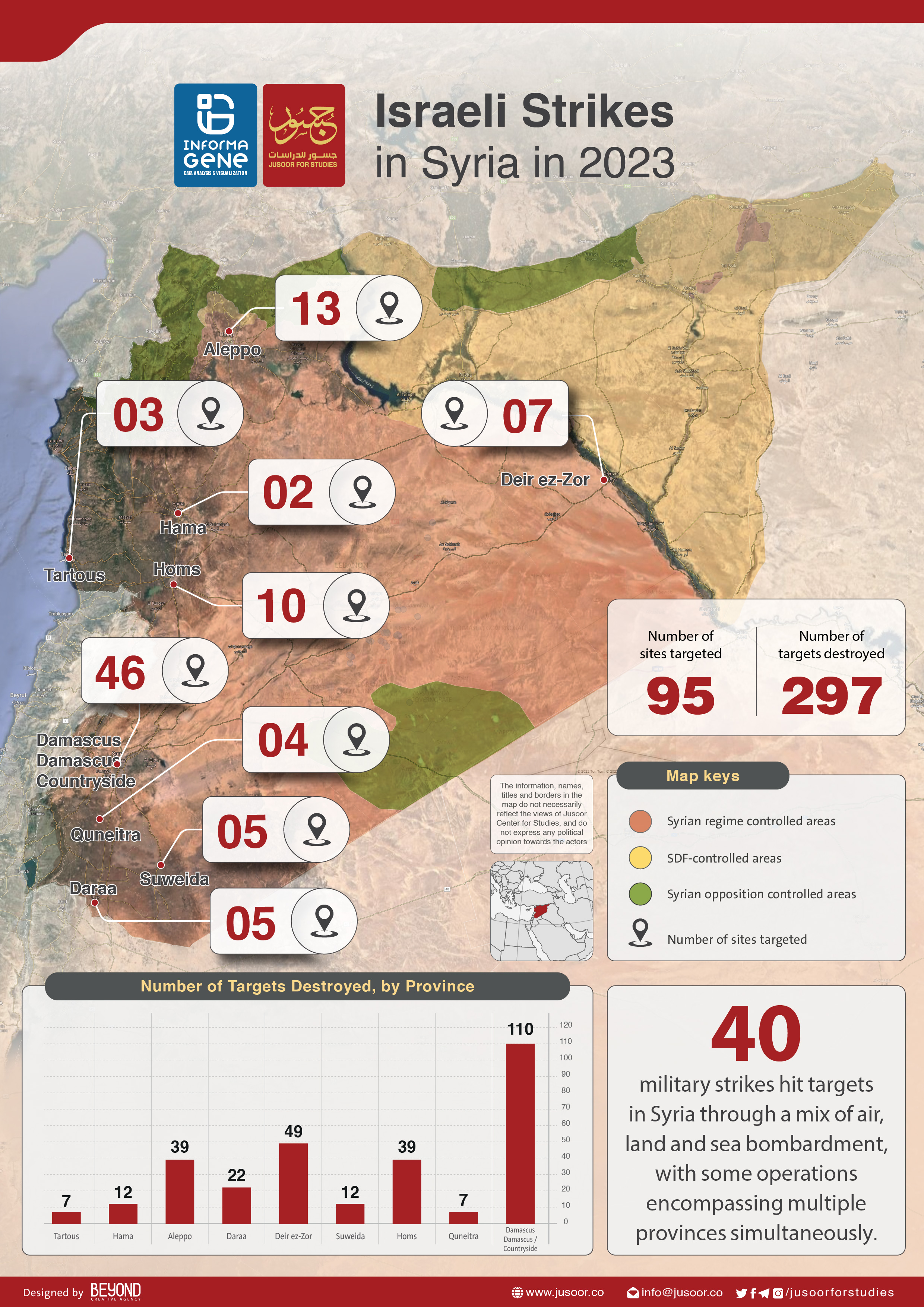
Second : The Targets of Israeli Strikes in Syria
Israel has carried out strikes on Iranian militia targets across Syria. The most commonly targeted locations are in Damascus and its rural hinterland, then Aleppo, followed by Quneitra, Suwayda, Daraa, Homs, and finally Tartous, Deir ez-Zor, and Hama.
Israel has carried out strikes on Syria with a range of objectives in mind, including assassinating the leaders of Palestinian factions, eliminating weapons depots, manufacturing and assembly centers, and cutting land and air supply routes used by Iranian militias and others. The following are some of the main trends over 2023:
• Many of the strikes targeted Iranian militias and Hezbollah. Israel repeatedly bombed military units affiliated with Hezbollah in Syria, namely Security Unit 133, the Golan Unit, and units 4400 and 108. These units are deployed in the south of the country, namely Damascus and Quneitra provinces and are responsible for gathering intelligence on Israel and carrying out operations against it from within Syrian territory in the event of a conflict. They also recruit Palestinians and Syrians to carry out operations inside Israel, and oversee the transfer of fighters and drone technology for producing drones, which takes place out of Lebanon. They also smuggle weapons and ammunition to Hezbollah positions in Lebanon, directly from the Revolutionary Guard’s storage depots located in Syria.
• Israel also targeted Iranian military advisors in Syria, including commanders and technicians. In late December, it assassinated Reza Mousavi, a top figure in Unit 2250, which was set up to receive equipment, weapons, and people arriving from Iran via Syria to Lebanon. Targeting such individuals indicates that Israel is seeking to undermine logistical links between the Revolutionary Guards, Iranian militias in Syria and Hezbollah in Lebanon.
• Israel also struck a number of civilian airports, specifically the Damascus and Aleppo international airports, which between them were bombed at least 12 times – seven at the former and five at the latter. This type of strike indicates that Israel believes Iran is making extensive use of civilian airports, with their logistical facilities such as maintenance lines and helicopter access, to produce, develop and assemble rockets for deployment in Syria and Lebanon as well as making use of helicopters for transportation and logistical support purposes such as transportation of ammunition and food for forces, exploiting their ability to fly at very low altitudes in order to transport equipment from airports to the locations where militias are deployed, far from both Israeli and Russian eyes.
• The year was also marked by a return to targeted killings of senior figures in the Palestinian factions in Syria. This is a break from previous years, during which Israel had not attacked those factions, with the exception of an attempt in late 2019 to assassinate a member of the political bureau of the Islamic Jihad movement, Akram Al-Ajouri. In March 2023, Israel assassinated a leader of the Al-Quds Brigades, the movement’s military wing Ali Ramzi Al-Aswad, at his home in the capital, Damascus. This suggests that Israel believes Iranian militias and Palestinian factions are cooperating, especially following reports that Revolutionary Guards formed a joint operations room with those factions in Syria even before Operation Al-Aqsa Flood.
• However, Israel conducted few strikes against the Syrian regime’s military, with the exception of certain sites and facilities used by the Revolutionary Guard for weapons storage, manufacture and transport, or for training. These include the 75 th Brigade of the First Division in Jabal al-Mana in rural Damascus, the 106 th Brigade of the Republican Guard, and the 5th Division in Tal Al-Jumua. This indicates that the regime’s conventional forces no longer pose any military threat to Israel, which is focusing its strikes on units and facilities used by Iran.
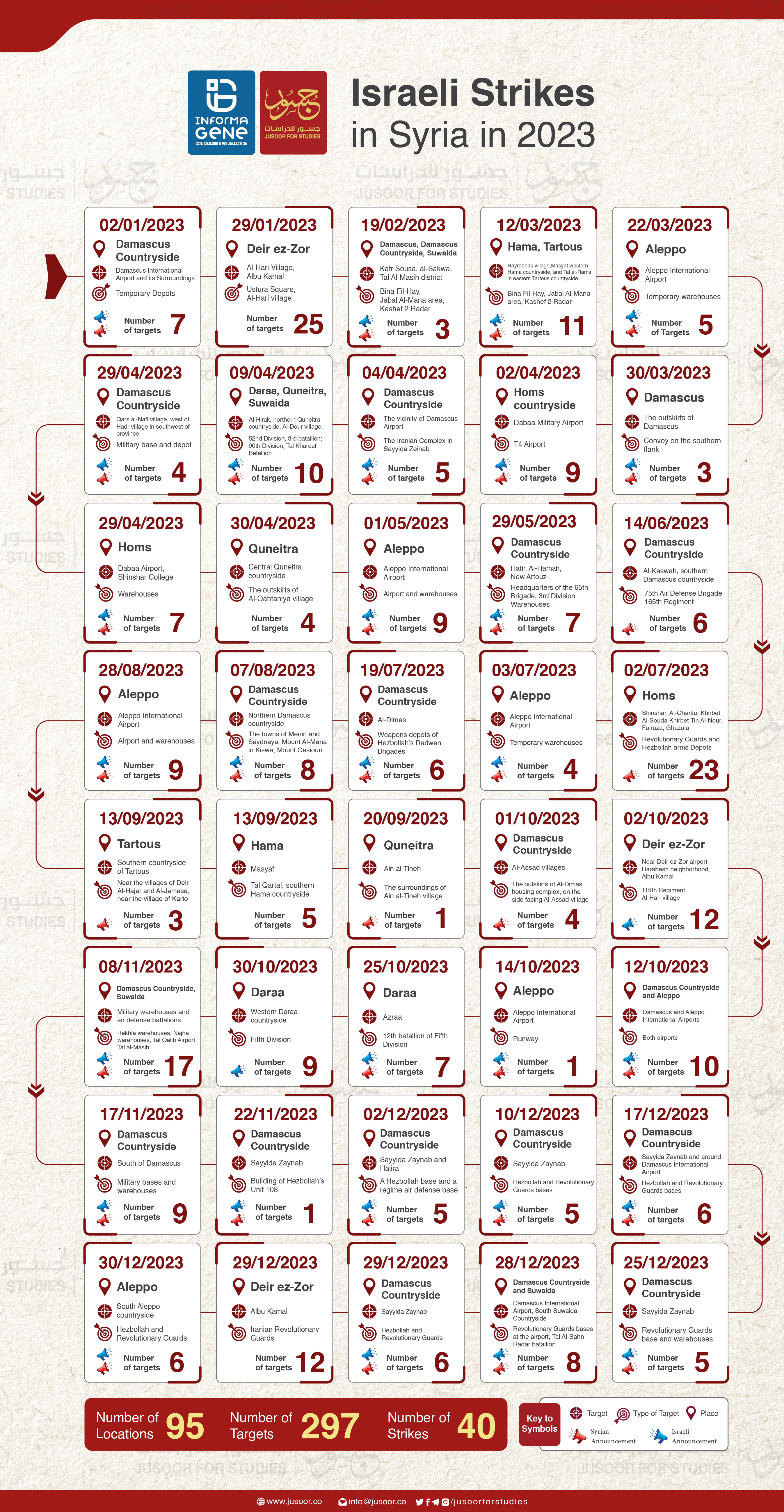
Conclusion
Israel’s strikes in Syria over the course of 2023 reflect its goal of maintaining the power gap with Iran and its militias in Syria, in light of Iran’s ongoing efforts to create a deterrent force and reach a strategic balance with Israel, especially in southern Syria.
The tempo of Israeli strikes against Iranian militias in Syria is likely to increase. These strikes will focus on specific targets and aim to limit these groups’ ability to deploy. The strikes are therefore likely to target military advisors, including commanders and technicians, and to cut off logistics and communications lines by land and air.
This means that Israel will continue to strike civilian and military airports. It may expand the scope of such strikes beyond Damascus and Aleppo, to include other airports such as Dabaa, if it believes that that Iran, in cooperation with the regime, is working to rehabilitate or use those airports for storage and transportation of weapons. It is likely to seek to destroy such infrastructure and facilities wherever they are located, deep inside Syria.
The positions of international actors have allowed Israel to continue and develop its military strategy in Syria. Russia, despite the wars in Ukraine and Gaza, has not disrupted the bilateral military coordination mechanism in place with Israel since 2015, and has not publicly objected to military strikes against Iranian sites there at all. As for the United States, it appears willing to support Israel carrying out military strikes against Iranian militias in Syria providing they do not trigger a slide towards a regional confrontation.

